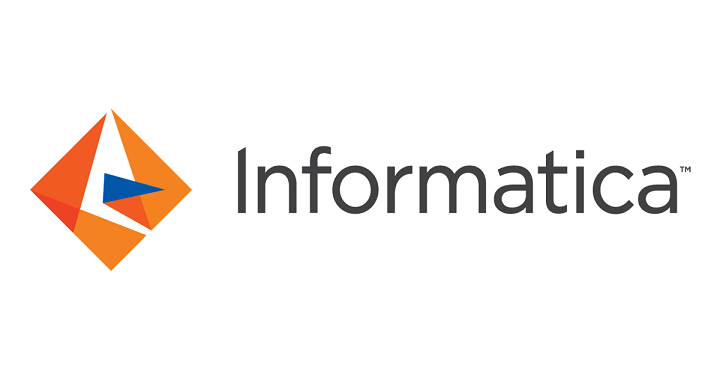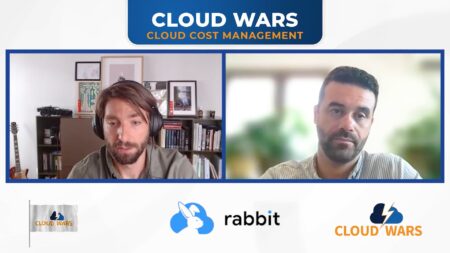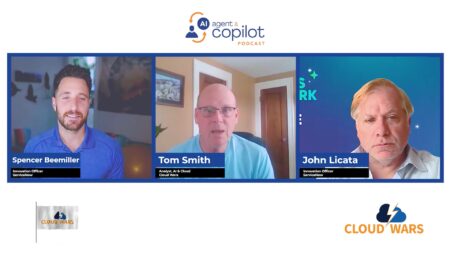Most data projects are established to provide a platform for performing data analysis and processing, but that is where project similarities often end. When completed, the best projects provide actionable value to the firms that initiated them, not just technology for technology’s sake. This point is critical as we evaluate the impact that a partner can have, both positive and negative, on your firm’s data project.
Partners are leading major data projects.
Generally, when looking at what partners are doing with client firms in data projects, we find partners taking a substantial role in identifying the right technology, leading integration projects, and proving project support resources in the following categories:
- Data storage and pipelines: availability, load times, different data structures, archiving
- Data analytics and science: reports, dashboards, or machine-learning basic outputs
- Data applications: systems that generate data, data quality
- Security, access, and monitoring: data protection, monitoring, access management
- Cost-optimization: cost-monitoring, structure-optimization, storage, and archiving
Recently, we also see more advanced partners with true data practices working on special data projects that include:
- Data scrubbing and cleaning and storage decision–making to determine what data to keep versus discard as well as data quality initiatives
- Exploratory data analysis projects designed to overcome a challenge or drive up an opportunity
- Interactive data visualization that empowers faster or better decisions in the minute that matters
- Clustering methods that enable better analysis and insights
- Machine-learning projects that are beginning to overcome physical staffing limitations
Picking the right partners is key to success.
As with all technology projects, most firms try to pick a partner that has the right technical and business skills while also ensuring they have resource availability and acceptable costs. With the high cost of inflation on many partners’ staffing equations, this balance of the right partner versus the right costs and availability has become even more challenging. Add into this equation the complexity of most data projects, and you can see where just any partner may become overwhelmed quickly when trying to run and staff multiple projects. Smart firms are looking not just at the project pricing but at the outcome of the project value to justify their investment in the right partners.
Many firms are discovering that their current partner that has for many years been “one throat to choke” for the firm with regards to sourcing technology, working integration, and providing simple services, is simply not up to the task of a complex data project. While saying that they are proficient at data projects, many generalist partners grossly overstate their abilities to retain customers as those customers’ needs evolve. Therefore, it is critically important as the customer that you carefully evaluate your partners’ true prowess with regard to data projects along with the outcomes that they have delivered on like projects.
Register here for your on-demand pass to view all content from Partners Ecosystem Digital Summit. The digital event, which took place on April 20, focused on analyzing the business and IT imperatives around cloud, AI, automation, data modernization, and cybersecurity that define the future of partnerships.
Identify and eliminate the risks in your partnering plan.
To get started on finding the right partners, it’s important to start with the risks inherent in a data project that’s already run by or supported by an existing partner for your firm. Here are the most common issues, along with best practices to mitigate risk, that we see occurring in partner-led data projects.
Data Security
This risk is obvious and often uppermost in our minds when we are considering data collection and analysis logistics, but have you considered the risk of allowing partners access to your data? Many partners have strong third-party data security, but there have also been many cases where breaches happened because partners left a proverbial door open. Checking your partner’s data security practices and processes, as well as careful monitoring of the same that goes beyond the standard procurement security requirements, is critical to ensuring that your partner doesn’t cost your project the ultimate price — a data breach.
Data Privacy
This risk is also fairly obvious but often neglected when looking at partner selection; particularly when a trusted partner who has been used before is engaged in the project. Privacy addresses aspects of the control process around sharing data with third parties such as a partner and their employees and contractors, as well as how and where that data is stored. At times partners do not have as robust of a process to ensure customer and employee data privacy, which can lead to risky outcomes.
Costs
As with all projects, cost management is critical. Using a partner for time and materials for data projects can be both costly and risky as unclear specifications or less qualified partners may run up substantial project bills without providing real value or outcomes. Consider working on outcome-based pricing, whereby you and the partner base part or all of the costs at risk on a successful outcome as defined by both parties.
If your partner is reluctant to offer or accept some risk in the pricing of your project, they are likely not the right partner. Partners with good competency and outcomes are always willing to risk some variable compensation with an upside for achieving your goals.
Time to Deployment
Everything sounds right about your partner’s skills, pricing, and project scope, but they fail to hit your timelines — and thus are a failure. Currently, we are seeing some massive misses in time to deployment through and with partners due to short staffing, increased project complexities, and improper data-project planning. Evaluating your partners’ ability to hit timelines as needed to deploy is critical for success.
One way to avoid time-to-deployment delays is for the partners to put skin in the game with regards to hitting all timing milestones in their pricing. Another way to manage this is to agree to timelines and carefully monitor achievement and progress along the way based on staffing. We have even seen clients who insisted on key project personnel signing agreements on timelines and deliverables — a smart move in a market where turnover is high and key employee turnover could put your project at risk. Keep an eye on your partner’s ability to scale and provide timely updates during the proposal process; you might discover that your partner may be short-staffed and therefore puts your timeline at risk.
Scalability and Responsiveness to Change
Scopes change as you uncover issues or opportunities in your data project, and the right partner will be able to roll with the proverbial punches that a data project delivers. This scalability will of course come at a cost, but it should not be the cost of your project being put on hold or failing. The right partner should be able to scale up quickly to meet your changes and provide the right resources to respond to changes that occur. This metric is harder to downselect during partner selection but one way to is to ask for references that can speak to their ability to respond to change and scale up or down quickly on a project.
Final Thoughts
Keeping the above in mind when selecting the proper partnering strategy, and, ultimately, the correct partner for your data project, is key. Using the right partner will deliver for your firm, while using the wrong one could torpedo your important data projects, so choose carefully, monitor consistently, and address issues immediately to provide the best chance of partner success for your firm.
Happy Partnering!
Join us on October 27, 2022 for Acceleration Economy’s Data Modernization Digital Battleground, a digital event in which four leading cloud vendors answer questions on key considerations for updating data strategies and technology. Register for free here.
The Top 20 Data Modernization Providers
In the analysis above, I’ve focused on some ways to vet partners for data projects. Below are some top candidates to help with data projects, along with some key strengths that each offers. These companies are the subject of ongoing analysis at the Acceleration Economy site.
| Company | Key data modernization product / service | Why they are in the Top 20 |
| Alibaba | PolarDB | PolarDB is a cloud-native relational database compatible with MySQL, PostgreSQL, and Oracle. PolarDB provides the performance and availability of traditional enterprise databases and the flexibility and cost-effectiveness of open-source databases. |
| Amazon | Amazon Aurora | Amazon Aurora is an affordable and efficient option for running small and medium instances on cloud servers. Aurora offers a choice of additional features designed to make app testing and development easy and efficient. Tens of thousands of customers within many industries rely on Amazon Aurora |
| Cloudera | Cloudera Data Platform | Cloudera quickly became a leader in the big data market after it launched in 2008. They turned Hadoop into an enterprise data hub. |
| Cockroach Labs | CockroachDB | CockroachDB is the world’s most evolved cloud SQL database — providing scale, resilience and low latency. Among their customers: Comcast, Lush, NUBank, Bose or Form3 Financial. |
| Couchbase | Capella Cloud Database | Impressive roster of customer wins with the likes of Home Depot; primary focus on cloud for modernization; company is growing fast in a challenging economy. |
| Databricks | Databricks Lakehouse | More than 5,000 organizations worldwide — including Comcast, Condé Nast, H&M, and over 40% of the Fortune 500 — rely on the Databricks Lakehouse Platform to unify data, analytics and AI. |
| Datastax | Astra DB | Gives enterprises and developers the simplicity and cloud economics to deploy massive data that powers rich interactions through modern apps. DataStax and Apache Cassandra enable over 90 percent of the Fortune 100 to create transformational outcomes with data. |
| Google Big Query | AI-powered easy apps. Easy to use, plus there’s a free tier to explore and choose the ideal services that you need. You can start with cloud computing without worrying about complex user interfaces, dashboards or confusing manuals. | |
| IBM | IBM Cloudant | IBM Cloudant is a distributed database that is optimized for handling heavy workloads that are typical of large, fast-growing web and mobile apps. Available as an SLA-backed, fully managed IBM Cloud service, Cloudant is also available as a downloadable, on-premises installation, and its API and replication protocol are compatible with an open source ecosystem and libraries for the most popular web and mobile development stacks. |
| Informatica | Cloud Data Integration for Cloud ETL and ELT | Combines all your business data into a trusted, unified view with zero-code data integration tools; customers include Grant Thornton, British Telecom and Unilever. |
| MariaDB | MariaDB | Open Source database management system hasstrong focus on security. Cluster database architecture which it brings multi-master replication. Customer include Nokia, Samsung, and Red Hat. |
| Microsoft | Microsoft Azure Synapse | Azure Synapse is an analytics service that brings together enterprise data warehousing and Big Data analytics. It gives you the freedom to query data on your terms, using either server-less or provisioned resources. Azure Synapse delivers a unified experience to ingest, prepare, manage, and serve data for BI and machine learning applications. |
| MongoDB | MongoDB | MongoDB has cultivated a reputation as a versatile, flexible NoSQL database and is currently used as the backend data store of many high-profile businesses and organizations including Forbes, Facebook, Google, IBM, Twitter, and many more. |
| Oracle | Oracle Exadata Database Service | Oracle Exadata is software and hardware engineered to support high-performance Oracle databases. These applications are delivered on an integrated development and deployment platform with additional tools to create and extend new services quickly. Users include Dell Technologies, Duracell and Mazda. |
| RedHat | OpenShift Database Access | Open hybrid cloud is Red Hat’s recommended strategy for architecting, developing, and operating a hybrid mix of applications, delivering a flexible cloud experience with the speed, stability, and scale required for digital business transformation. |
| Redis | Redis Stack | Redis Stack can handle millions of read/write operations per second at sub-millisecond latencies, running on any cloud platform. Seamlessly and automatically scale data across hybrid, cloud regions, and multiple clouds. |
| SAP | SAP BW/4HANA | SAP HANA Cloud offers seamless integration of existing solutions and hybrid systems, rapid deployment, simple development of native business applications, and consistent user experience. |
| Snowflake | Snowflake | Snowflake has out-of-the box features like separation of storage and compute, on-the-fly scalable compute, data sharing, data cloning, and third party tools support. |
| Teradata | Teradata Database | Teradata supports hybrid and multi-cloud capability using the same database across all deployment modes. Customers include Vodafone, Volvo, Groupon and American Airlines |
| VMware | VMWare Private Cloud | VMware Private Cloud is well suited to enterprises considering moving away from on-premises infrastructure to a cloud environment. It lets customers allocate resources on-demand and have complete security controls. VMware is broadly considered the ‘go to’ partner for virtualization. |
Want more tech insights for the top execs? Visit the Leadership channel:








